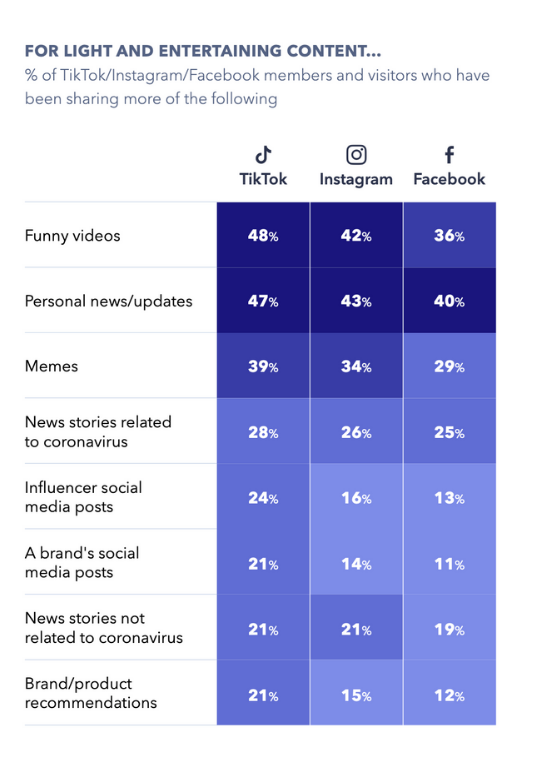Covid-19 has changed the way we connect on social - what does this mean for HE marketing?
Our social media usage has changed during the pandemic and research from Global World Index (GWI) shows that’s the case for nearly everyone. We have a look at what that research shows and how it could affect university marketeers.
My phone feels like one of my closest friends because it's a link to my closest friends (and family members) but I also rely on it for escapism.
I’ve become addicted to Facebook Marketplace - who knew other people’s unwanteds could be so enticing? - as all attempts to limit my screen time have become a distant memory. And according to research by GWI I'm not alone:
“Digital consumers are using social media for entertainment purposes on an even greater scale than before the outbreak.”
Global World Index
We all need a little light relief from the weight of the invisible virus, so we're filling our feeds up with entertainment.
Light social networkers (based on users who have tracked their screen time) have increased their usage by 15% year on year vs heavy users who are actually down on usage (globally) by 7%.
The pandemic has accelerated the global trend of reading news stories on social media: in April, as many as six in ten Gen Zs reported using it to keep up-to-date with news during the outbreak.
"The great thing about the internet is everyone can be a publisher. The really bad thing about the internet is everyone can be a publisher."
Steven Brill, CEO of NewsGuard.
Social media companies are being held more accountable for their user-created content and putting actions into place to notify users about sharing outdated or false news stories. Some platforms are going as far as asking users to confirm they’ve actually read an article before sharing it.
This is all good news. And if successful, greater levels of trust will be given to the online social space - it’s more important than ever to get it right.
Addressing fake news is presented as something to do collectively, you might have heard the phrase Infodemic its defined by WHO as the spread of misinformation relating to the pandemic, and has led to the rise of independent fact-checking organisations like Infotagion.
How this could apply to your own content marketing strategy:
1. Right tone, right channel
News is a well-embedded and increasingly important aspect of the online social experience - how many channels do you use to engage with students, parents, stakeholders for research funding?
Publishing the right tone on the right channel is a difficult balance but consumer research like this can be helpful to establish what works best and where for your university voice.
Take a look at the kind of content being shared and whether it reflects your own:
2. Audience diversity on social
The pandemic is broadening the demographic range of potential audiences to engage with. That doesn’t mean you need to do more (phew). Platforms like TikTok (which is now appealing to an older generation as families find new ways to reconnect) isn’t just about reaching young students, it’s also a great space to reach parents, influencers and adult learners.
Short-form video can be a cheap, quick and entertaining way to grab the attention of a wider and more diverse audience. You might already have assets that you can use rather than creating even more content.
Direct, honest and open communication will drive home the message to students and parents that your university’s teaching and safety are at the heart of everything you do. The human stories will help your audience to recognise themselves in your institution.
3. Live streaming potential
Reliance on social media for news and information updates has accelerated, as has the volume of live streaming adopted by younger consumers. With 23% of global consumers planning to continue watching more videos post-outbreak, the future of live streaming looks promising. Who are your marketing team (and student) creators? Facebook has rushed to make live producer streaming available and you can now incorporate ads into IGTV videos on Instagram.
If open days only existed online then expanding the list of tools available for better interaction is necessary if the popularity of live streaming is to stick post-pandemic:



